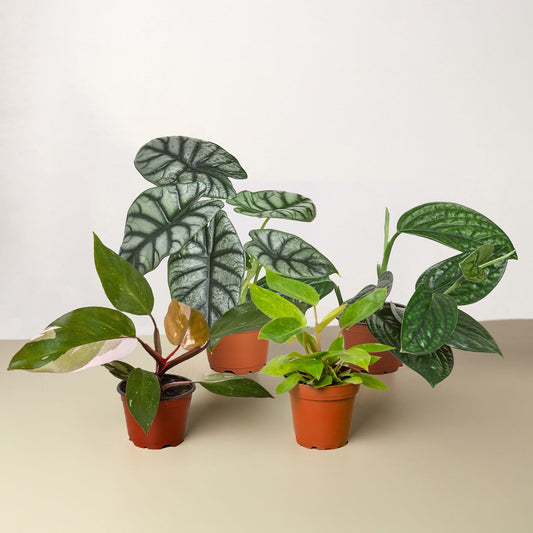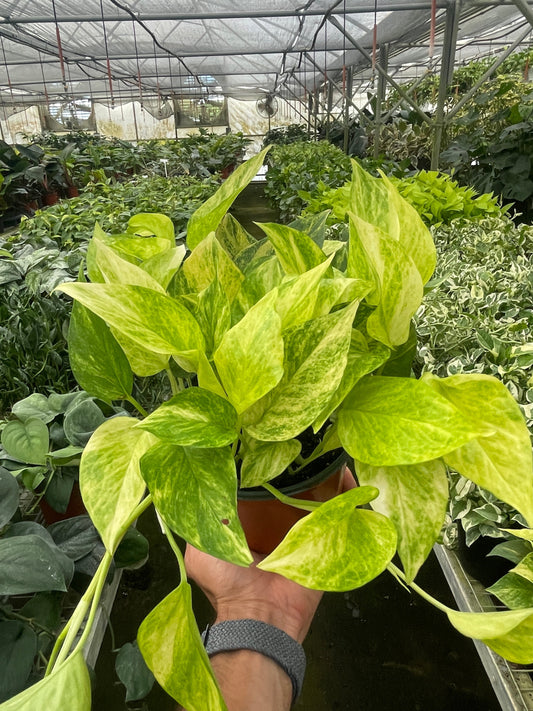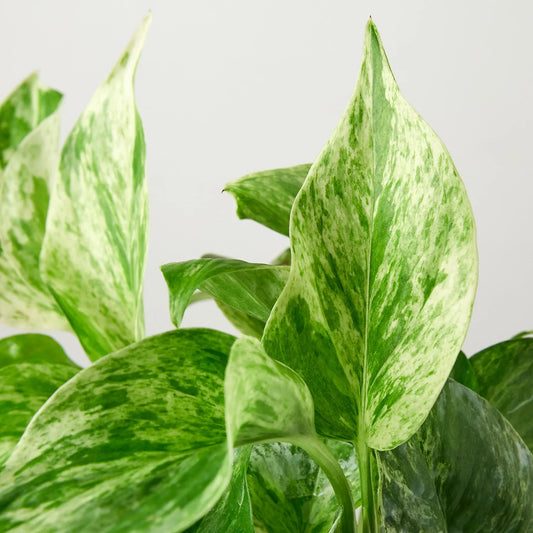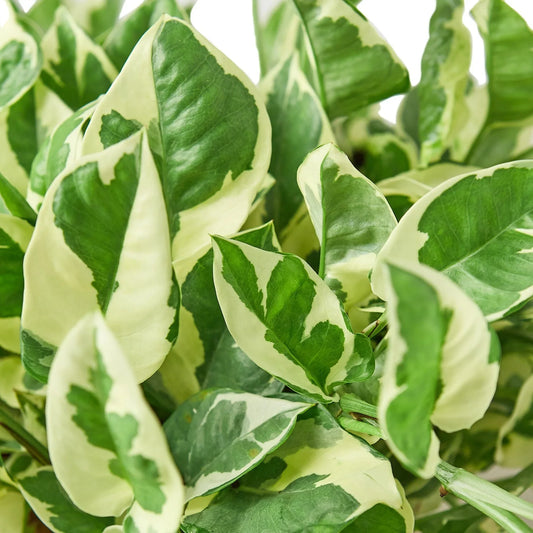How To Fix A Leggy Polka Dot Plant
Cafe Planta Team
Your polka dot plant is showing signs of legginess, and you’re not sure what to do? You’re not alone! Many plant parents face this common dilemma. These vibrant little plants, known for their colorful, spotted leaves, can get a bit scraggly if conditions aren’t just right.
This post will guide you through understanding why your polka dot plant gets leggy and what you can do to fix it. We’ll talk about lighting, watering, and trimming tips, along with some fun styling ideas to keep your plant looking its best. Let’s get started on giving your plant the makeover it deserves!
Understanding Legginess in Polka Dot Plants
Legginess in polka dot plants often happens when they’re reaching for more light. They’re tropical plants, loving bright, indirect sunlight, and when they don’t get enough, they grow spindly stems to try and reach the light source. This isn’t just an aesthetic issue—it can affect the plant's overall health.
When you see your plant stretching out, it’s a good sign that it needs a bit more love and attention. Besides light, other factors like improper watering and lack of nutrients can contribute to legginess. Recognizing these signs early can help you take action to restore your plant to its full, bushy glory.
But how do you determine what’s causing the legginess? A good starting point is to evaluate the light conditions. If your plant is in a low-light area, consider moving it to a brighter spot. However, direct sunlight can scorch the leaves, so aim for a balance. Natural light is great, but if that’s not an option, a grow light can be a useful tool.
Optimizing Light Conditions
Light is crucial for your plant’s growth. Polka dot plants thrive in bright, indirect light. If your plant looks like it’s on a mission to find the sun, it might be time to reconsider its placement in your home.
Think about your windows. South- or east-facing windows are usually ideal as they provide ample light without overwhelming the plant. If your plant is too far from the window, it might not be getting the light it craves. You might consider rotating the plant weekly to ensure even light exposure, which can help prevent uneven growth.
If natural light is sparse, consider investing in a grow light. These lights can be adjusted to mimic the sun's natural path and provide the necessary energy for your plant to grow healthily. They’re especially handy during the winter months when daylight is limited.
Remember, while seeking light, don’t overlook the importance of acclimatizing your plant slowly when moving it to a brighter spot. A sudden change in lighting conditions can shock your plant and cause additional stress. Gradually increasing light exposure will help your plant adjust comfortably.
Watering Wisely
Watering might seem straightforward, but it’s a common area where things can go awry. Overwatering or underwatering can both contribute to legginess in your polka dot plant. Finding that sweet spot is essential.
These plants prefer consistently moist soil, but not soggy. It’s a good practice to water when the top inch of the soil feels dry to the touch. You can use a finger test to check soil moisture—just stick your finger in the soil up to the first knuckle. If it feels dry, it’s time to water.
On the flip side, make sure your pot has good drainage to prevent water from pooling at the bottom. Excess water can lead to root rot, which can cause your plant to look leggy and unhealthy. A pot with drainage holes or adding a layer of pebbles at the bottom can help manage excess moisture.
An important tip is to water less frequently in the winter when growth slows down. During this time, the plant’s need for water decreases, and the soil will take longer to dry out. Adjusting your watering schedule seasonally can make a big difference in maintaining a healthy plant.
Trim and Prune for Healthier Growth
Pruning is your friend when it comes to fixing a leggy polka dot plant. Regular trimming encourages bushier growth by promoting new shoots and keeping the plant compact.
Start by identifying the longest, most spindly stems. Using clean, sharp scissors or pruning shears, cut these back to just above a leaf node. This cut will encourage the plant to branch out from that point, leading to a fuller appearance.
Don’t be afraid to cut back more than you think is necessary. Polka dot plants are resilient and will bounce back quickly. Regularly pruning not only helps with aesthetics but also encourages healthier growth by removing any dead or damaged leaves that may sap energy from the plant.
Pruning is also a great opportunity to propagate new plants. The cuttings you take can be rooted in water or soil, giving you more plants to decorate your home or share with friends. It’s like getting a bonus plant for free!
Feeding Your Plant
Fertilizing your polka dot plant can provide the nutrients it needs to stay healthy and vibrant. Without adequate nutrition, the plant might grow leggy as it struggles to find the resources it needs for proper growth.
A balanced, water-soluble fertilizer applied every four to six weeks during the growing season (spring and summer) can help maintain healthy growth. Be cautious not to over-fertilize, as this can lead to salt build-up in the soil and potentially harm your plant.
In the fall and winter, reduce or stop fertilizing. The plant's growth naturally slows down during these months, and it won’t require as much nutrition. Over-fertilizing during dormancy can stress the plant and lead to unwanted growth problems.
A little extra nutrition can go a long way in keeping your polka dot plant full of life and preventing legginess. Remember to follow the instructions on your fertilizer carefully to avoid overdoing it.
Potting and Soil Considerations
The right pot and soil can make a huge difference in your plant's health. Polka dot plants prefer well-aerated, slightly acidic soil. A standard potting mix with added perlite or sand for drainage is usually a good choice.
Repotting might be necessary if your plant shows signs of being root-bound, which can contribute to legginess. If the roots are circling the bottom of the pot, it’s time to move your plant into a slightly larger container. Spring is usually the best time for repotting, as the plant is entering its active growth phase.
When repotting, gently loosen the root ball and remove any dead or rotting roots. This will encourage new root growth and help the plant absorb nutrients more efficiently. Be gentle, as polka dot plants can be a bit sensitive to disturbance.
Choosing the right pot is also important. A pot with drainage holes is essential to prevent waterlogging, which can lead to root rot. Consider using a pot with a saucer to catch excess water and protect your surfaces.
Dealing with Pests
Pests can sometimes be a hidden cause of legginess. Common culprits for polka dot plants include aphids, spider mites, and mealybugs. These pests can sap the plant's energy, leading to weak, spindly growth.
Regularly inspect your plant, especially under the leaves, for any signs of pests. If you spot any, act quickly. A simple solution of water and dish soap can be sprayed on the plant to deter many pests. For more persistent infestations, an insecticidal soap or neem oil might be necessary.
Preventing pests is easier than dealing with them after they’ve taken hold. Keeping your plant healthy through proper light, watering, and nutrition can make it less attractive to pests. Additionally, isolating new plants for a few weeks before introducing them to your collection can help prevent the spread of pests.
Creating a Stylish Setup
Once your polka dot plant is back to its vibrant self, styling it in your home can be a fun way to showcase its beauty. These plants are versatile and can fit into various design styles, from modern to boho.
Consider placing your plant in a decorative pot that complements your interior design. Grouping it with other plants of varying heights can create a lush, layered look. You might also try hanging your plant or placing it on a plant stand to add some visual interest.
Remember, your plant’s placement should still prioritize its light needs. Styling is important, but ensuring your plant gets the right light will keep it healthy and happy. Experiment with different locations and arrangements until you find the perfect spot that combines aesthetics with practicality.
Final Thoughts
Fixing a leggy polka dot plant takes a bit of patience and care, but with the right adjustments, your plant can thrive once again. By addressing light, water, nutrients, and other factors, you can encourage fuller, healthier growth.
At Cafe Planta, we're passionate about helping you care for your plants. Whether you're looking for new plants to add to your collection or need advice on plant care, we're here to support you. Feel free to email us or reach out on Instagram. We're excited to help you create a beautiful, thriving home filled with plants!



















